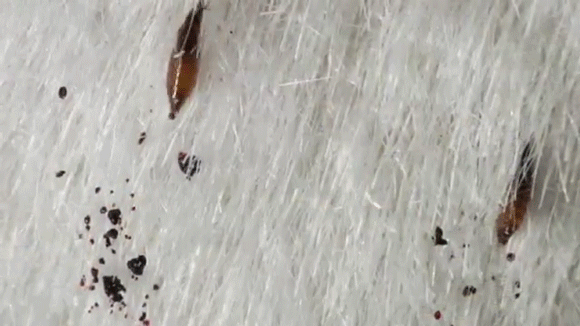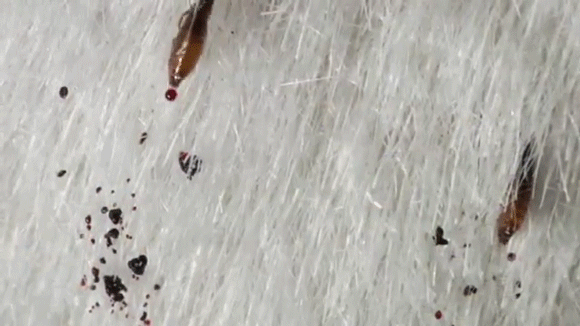
Img 1 An adult cat flea sucking the blood of a dog. Excess blood is excreted without being digested. The feces or flea dirt is the primary food source of larvae.
Summary
Fleas do suck blood. They’re one of the few insects which rely on blood for their entire life cycle. Both female and male fleas exclusively consume host blood for sustenance. While feeding, they imbibe excess blood. The extra blood gets excreted as feces to feed larvae.
Details
Fleas Feed Exclusively on Blood
Fleas rely on blood throughout their entire life cycle. Even the larvae require the blood-laden feces of adults fleas. Adult fleas, of both genders, exclusively consume host blood. This trait is unique to fleas and the higher flies. In nearly all other species of blood-feeding arthropods (e.g. ticks and mosquitoes), blood meals are only taken by females.
Blood & Reproduction
Blood is more than a form of sustenance for fleas. It’s also necessary for reproduction. Fleas must consume a blood meal in order to mate and reproduce. Newly emerged fleas are sexually immature. Females have under-developed ovaries, and males have testicular plugs which block sperm. Unfed males won’t even attempt to mate. Feeding on blood triggers sexual maturation for both sexes.
Blood Feces & Parental Care
Adult fleas imbibe much more blood than they can use. Blood passes rapidly through their guts, and only that closest to the midgut is retained for digestion. As a result, fleas excrete a large amount of feces (flea dirt) in the form of undigested blood.
Larvae rely on flea dirt for food. They can’t survive without it. Male and female adults both provide larvae with this protein-rich food. It’s believed to be an initial step in evolution towards parental care.
Fleas are Adapted for Blood-Feeding
Cat fleas are vessel feeders, taking blood directly from capillaries. Vessel feeding exploits the host’s blood pressure, resulting in a rapid, low-energy blood meal.
Adult fleas have mouths which are well-adapted for piercing skin and sucking blood. The fascicle, a structure of three stylets, is the primary mouth part. The sharp outer two stylets puncture the host’s skin. Then central stylet enters into the capillary to draw blood. Nearby muscles contract, creating suction and a pumping action to aid the flow of blood through the esophagus and into the midgut.
When fleas feed, salivary glands open and droplets of saliva fall at the bite location. The saliva has anticoagulant and antiplatelet properties which help the blood flow into the flea. In addition, flea saliva creates an enzymatic reaction to dissolve, soften, and spread dermal tissue. This makes penetrating the skin easier. As a result, remarkably little damage occurs from feeding.
After blood reaches a flea’s midgut, a valve-like structure prevents regurgitation. Components are then released for digestion. Fleas have digestive enzymes specifically adapted for handling blood.





You must log in to post a comment. Log in now.